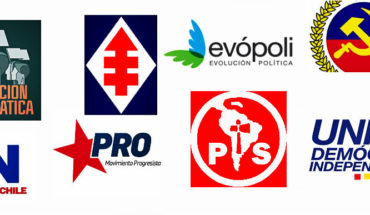The federal government confirmed that the overflow of the Tula River on September 6 was not due to rains in that municipality of Hidalgo but because the tributary of the river was exceeded by sewage emissions sent from Mexico City.
The administration of Andrés Manuel López Obrador also acknowledged that another factor of the flood was that the works that Semarnat ordered to be carried out on the Tula River since 2017 to expand its load capacity prior to the entry into operation of the East Emitter Tunnel (TEO) were not carried out, and blamed environmental groups for having prevented its realization.
These conclusions are contained in a seven-page internal report prepared by the National Water Commission (Conagua) and which was delivered and analyzed at a working meeting led by President López Obrador in Tula two weeks ago.
However, despite the fact that the conclusions recognize administrative decisions, the Conagua report exculpates public officials from responsibility and maintains that the death of 14 patients of the IMSS hospital in Tula due to the flooding was due to “unexpected, extraordinary, inevitable and uncontrollable events” and that everything was a “fortuitous” case.
Conagua is part of the metropolitan inter-institutional body that decided to activate the Hydraulic Operation Protocol that overflowed the Tula River on September 6, as announced by the Political Animal.
“The Meteorological Service included forecasts of heavy to very heavy rains (between 50 and 75mm) for the region. It should be noted that the flood recorded was not due to the effect of local rain but to the runoff of the Sierra de Guadalupe, the Tlautla River, the requena discharge and the emitting tunnels of the Valley of Mexico that converge to the Tula River. That is, it was not the local rain, but the runoff from the rivers, dams and drainage works of the Valley of Mexico and the state of Hidalgo, which caused the flooding,” the report states.
The document specifies that the Tula River reached a flow of 500 cubic meters per second (m3 / s), when the tributary only has natural capacity to give channel at 250 cubic meters per second.
According to the report, only the operation of the East Emitter and Central Emitter Tunnels contributed 150 cubic meters per second, while the venting of the Requena dam contributed 100 cubic meters; that is, the dam was cleared at the time when the Tula River received discharges from Mexico City, which contravenes official operating protocols.
“Derived from the aforementioned rains, there was significant runoff into the Tula River. In the early morning of Tuesday, September 7 of this year, the estimated flow that passed through this river was of the order of 500 m3 / s, of which 150 m3 / s came from the discharges of the Valley of Mexico through the central emitter and East emitter tunnels, 28 m3 / s of the El Salto River, 100 m3/s of the discharge of the Requena dam, 130 m3/s of the Tlautla River, and 92 m3/s of the own basin between the exit of the tunnels and the city of Tula de Allende, “explains the report.
The report warns that it was known that Tula is a flood zone and that the required works were not carried out to prevent the overflow of the river.
“Since 2009, the Hidalgo Risk Atlas considers the city of Tula de Allende at risk from flooding due to the overflow of the Tula River. In 2016, an attempt was made to expand the driving capacity of this river. However, the works were not carried out due to the opposition of environmental groups,” he says.
The report is contradictory in acknowledging that the rains that occurred between September 6 and 7 in the region were planned by the National Meteorological Service (SMN) and, at the same time, saying that the overflow of the river was “inevitable”. This media reported that the SMN admitted that the rains were not atypical.
“In the events that occurred on September 6 and 7, 2021, the occurrence of widespread intense rains in Mexico City and in the states of Mexico and Hidalgo is identified, unprecedented events in terms of their territorial extension and duration, which generated extraordinary runoff in these three states with discharge into the Tula River, giving rise to the sudden, uncontrollable and inevitable event of the overflow of the river,” says the Conagua report.
The document reveals that, after the overflow of the river, there were IMSS patients who died almost nine hours after the flooding of the Tula hospital, which accounts for the time it took for the federal government to react to the emergency. Despite this, the official version does not accept anyHe insists that these were facts beyond his control.
“The death of these people occurred as a result of a concatenation of unexpected, extraordinary, inevitable and uncontrollable events for the institutions and public servants who attended the events. It is essential to mention that the result of the natural phenomenon of hydrometeorological origin constitutes a case of force majeure and / or fortuitous event, “concludes the report.
They seek, now, to attend to the Tula River
Conagua announced that a working group was formed with authorities from nine municipalities of Hidalgo to seek solutions to the risk of flooding in the state and to carry out actions regarding the Tula River.
Another of the actions contemplates elaborating a new protocol of operation of the drainage system of the Valley of Mexico that includes officials of the government of Hidalgo, since to date only Conagua, Mexico City and the State of Mexico are represented in the Metropolitan Drainage Commission.
Conagua issued a statement this afternoon after President López Obrador was questioned about administrative responsibilities in the overflow of the river that caused the death of 14 people.
“Conagua integrated an agenda of actions that considers, in a first stage, to continue with actions to address the effects on drinking water systems. Additionally, a diagnosis and physical tour will be carried out next week to review the conditions of these systems. In a second stage, the head of Conagua proposed to carry out, in coordination with the municipal authorities, the Water System of Mexico City (Sacmex), the Water Commission of the State of Mexico (CAEM) and Conagua, a planning and an operation protocol of the hydrological system of the metropolitan area of the Valley of Mexico and Hidalgo.
In addition, an analysis of the infrastructure proposed by the municipal presidents will be carried out, through a feasibility study to ensure that the works have a true social impact on the population. On the other hand, in coordination with the Secretariat of the Navy, the areas where the desazolve of the Tula River will begin in the coming days will be technically evaluated,” the institution said.
What we do at Animal Político requires professional journalists, teamwork, dialogue with readers and something very important: independence. You can help us keep going. Be part of the team.
Subscribe to Animal Político, receive benefits and support free journalism.#YoSoyAnimal





